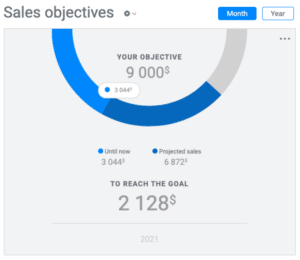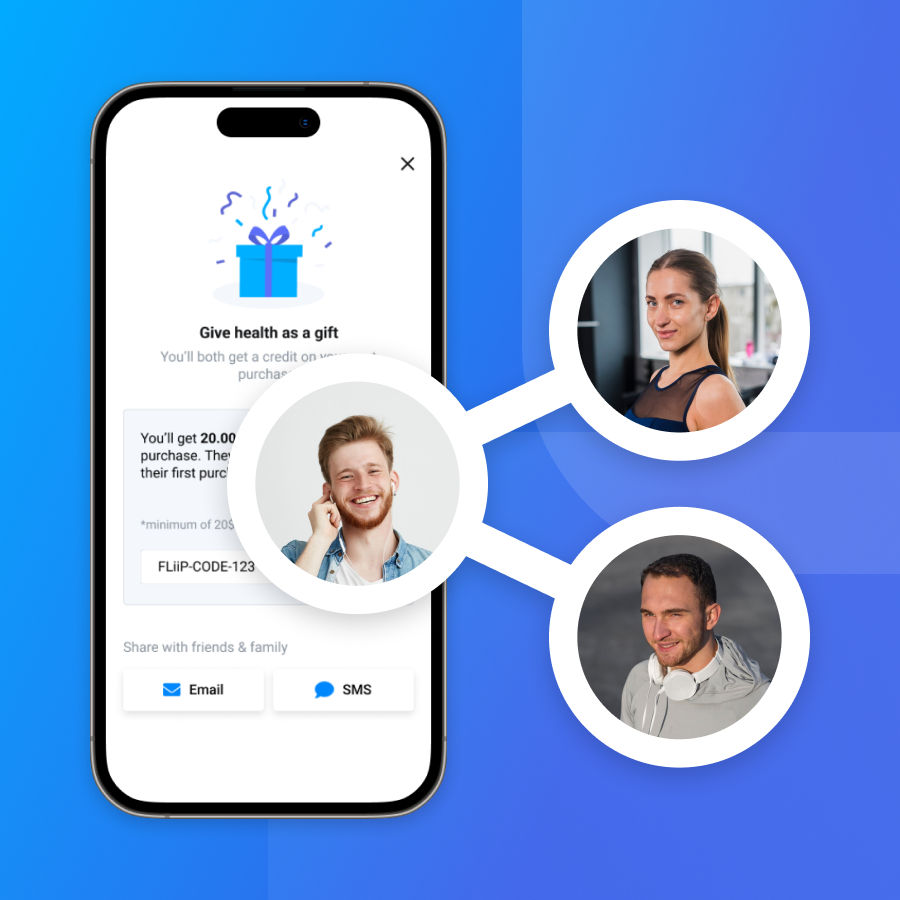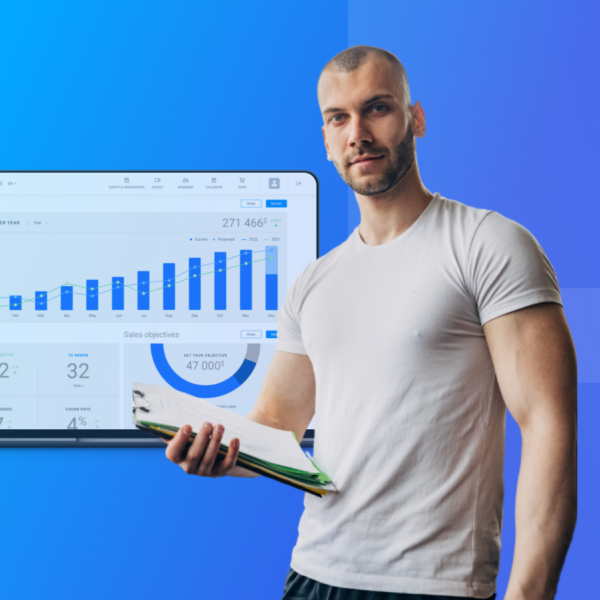How to Structure Your Accounting in Order to Save Time and Money

Have you ever been in a situation where you had no visibility on the profitability of your center? Been there done that 🙋♂️.
Profitability is what determines whether your center generates profits (or losses)
This is one of the most important criteria in assessing the value of your business; For example, for investors (to accelerate your growth), creditors (to finance acquisitions, equipment, purchase of a building), buyers or employees (your exit strategy).
Until recently, I had to wait for interim financial statements (every 3 months) to know the situation of my center. And even worse, it was often a few months after the end of my fiscal year that I learned whether I was making a profit or a loss.
The owner’s focus should be on maximizing the cash flow into the business. All efforts should be aligned with this focus.
The real problem: not having this information in time will stop you from making the right decisions (such as purchasing equipment that will allow you to avoid paying too much tax), but also from correcting the situation or accelerating your marketing budget to improve the growth of your center.
Obviously, with the level of cash flow (the $ amount in your account) in the checking account, it can be relatively easy to see trends. However, with quarterly tax returns, payroll deductions (DAS) the situation can easily become very difficult to understand and also to predict, especially if you don’t have a budget forecast.
To grow your business, you need to have visibility on profitability indicators, as much as possible in the very short term.
Mon objectif: connaître la rentabilité du mois dernier, 15 jours max suivant sa fin.
What can this visibility look like?
Revenues by department* :
- Functional training: 10 000 $
- Private or semi-private training: 4 500 $
- Fitness: 8 500 $
- Boxing: 6 000 $
- Yoga: 3 500 $
- Health Bar (equipments, supplements, etc): 3 000 $
Total sales** : 35 500 $
* Having my revenues divided by department allows me to see how they are really performing. If I simply look at overall profitability, I could easily miss a large loss in one department that would be hidden by a small growth in all other departments.
** To properly categorize my revenues by department, I use the FLiiP function which allows me to separate my income by department (By General Ledger account, in your settings / payments).
Spending by department* (Rent, salaries, other spending) :
- Functional training: 7 000 $
- Private or semi-private training: 2 500 $
- Fitness: 6 500 $
- Boxing: 4 000 $
- Yoga: 4 500 $
- Health Bar (equipments, supplements, etc): 2 300 $
Total spending** : 26 800 $
* To properly separate my revenues, I not only include salaries by department, but I also separate the Overhead. (Overhead refers to the ongoing costs of running a business, but excludes the direct costs associated with creating a product or service. In the case of a gym, the direct costs are the salaries of the employees who operate the group classes for example).
** To have the best proportion of cost per department, I assign a ratio proportional to the revenues. For example, if the sum of my non-variable expenses (rent, insurance, electricity, internet, telephone) totals $10,000/month and, for example, one department generates 30% of the company’s total revenues, it will therefore assume 30% of the overhead.
In short, a department that generates more revenue will assume more overhead.
Profitability by department + total :
- Functional training: + 3 000 $ (+5%) *
- Private or semi-private training: + 2 000 $ (+X%) *
- Fitness: + 2 000 $ (+X%) *
- Boxing: + 2 000 $ (+X%) *
- Yoga: – 1 000 $ (-7%) *
- Health Bar (equipments, supplements, etc): + 700 $ (+X%) *
Total profits/loss: + 9 700 $ (+6%)
* In a perfect world, you have this dashboard built into your accounting solution (XERO for example, my favorite). You will be able to see the variations month after month, for example, +5% compared to last month.
How can it help me in my daily life?
By knowing how each aspect is performing, I can first investigate the loss or underperformance. Being at a loss, I can try to figure out what caused the loss, then make a quick adjustment.
For example, reduce my costs: maybe my classes are less busy? I could then readjust the number of classes offered, or plan marketing efforts to increase the number of clients, create introductory offers, etc.
Like mentioned earlier, the owner’s focus should be on what brings the most cash flow into the business. Why? Simply because, this is what allows you to reinvest in equipment, employee conditions (salaries, benefits) or simply to build a war chest for future projects.
What tools and resources do I use to get there?
A cloud accounting software
I suggest working with partners (accounting, bookkeeping) that work with the latest technology: cloud accounting software like QuickBooks, Xero (our favorite), Sage, Freshbooks.
By working with cloud software, you have all the latitude to go and get your reports autonomously, and you also have the advantage of being able to use tools that significantly facilitate and accelerate your time for bookkeeping.
A software that automatically interprets and integrates data
These softwares are able to interpret the amounts, dates, supplier names, and categorize them in your accounting software for you.
You just have to transfer your PDF invoices for example, to an email address. At FLiiP, we work with DEXT. Hubdoc is also excellent.
In short, the use of these 2 softwares allows you:
- Autonomy and time saving to see the situation of your company;
- Save a lot of time interpreting and classifying your invoices, but also by automatically linking them with the transactions in your bank account;
- Avoid lost invoices (allows you to scan via a mobile app for example).
As these softwares are relatively new on the market, many accounting firms do not work with the latest technologies. I, myself, had to change my accounting partner in order to have access to this information.
The action plan to get there:
- Ask your partner if it is possible to migrate to a cloud accounting solution. If not, do some research to find an accountant who will work with this type of solution. I often try to have the most fixed costs possible, that’s why I ask for a fixed monthly billing (and not variable, so paid by the hour)
- Automate transfer rules (your invoices received by email are automatically transferred to your accounting system via DEXT or Hubdoc, to name a few)
- Organize your revenues and expenses by department so that you can follow the monthly progress. Using FLiiP’s General Ledger Account feature, when you export your sales on a monthly basis, you can easily separate sales by department.
- Require monthly bookkeeping (maximum 1 month after the end of the month) so that you always stay up to date and have the information at the right time.
- The last step is to plan your sales objectives and follow them weekly via your FLiiP Dashboard!

It took me 8 years to realize how having access to the information quickly that allowed me to make the best decisions at the right time was essential for the optimal growth of my business.
It’s definitely a big change, one that takes time and sometimes costs a lot. If I had one piece of advice to give to all owners, but also to all entrepreneurs in 2021, it would be to surround yourself with the tools and resources of your generation. Accessible online, anytime, from anywhere!



